
10 tips for returning to Reformer Pilates post-birth
For those who love a good reformer session and keen to return as soon as you reach the 6 week mark post-birth, here are 10 hot tips from Physiotherapist, Briony O’Connor.
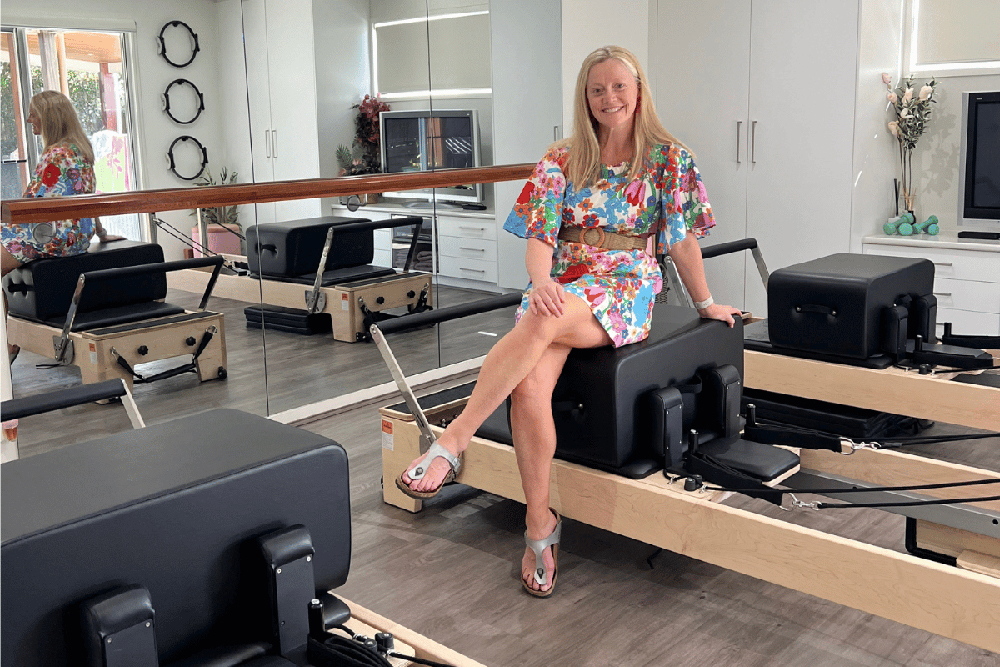
Briony has over 20 years experience in the Women’s/Pelvic Health area of Physiotherapy in hospital and private practice. She completed a 12 month Pilates training course in 2003 and has been instructing prenatal, postnatal, and general women’s classes since.
1. Avoid exercises that really challenge your balance, particularly advanced moves where you are standing on the carriage.
If possible, improve your safety by having the reformer moved close to a barre so you can use it for additional support if required. In the early months after having a baby you may feel like you lack some sense of “where you are in space” making you a little clumsy.
2. Make use of additional equipment such as the Chi ball, pilates ring, and bands.
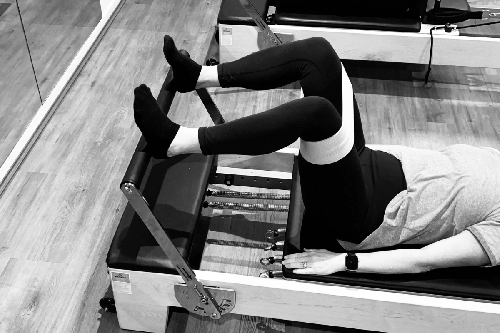

They can give greater input on joint position, make you feel more stable as you move, and assist with overall body awareness. For example, standing side-leg presses can have a Chi ball between the stationary leg and the bar. Compressing the lower leg into the Chi gives a sense of where the leg is positioned, improves stability, and improves side buttock activity on the fixed leg. Another example is adding a band around the lower thighs for parallel leg series in lying to help focus on keeping the knees aligned correctly and activate buttock muscles.
3. Keep it Simple.
Many reformer moves and combinations are a challenge on the mind as much as the body so when you are sleep deprived and new to parenting you are better to stick with less complicated sequences.
4. Abdominal work should start at the basics.
For example, when doing a hands in straps sequence bring your knees closer to your chest than at table top to reduce strain on your lower back and abdominal wall. It might help to have your feet crossed. Try doing arm sequences with your head down or alternate between raising the head and keeping it down. Keep focused on “zipping up your corset” and raising up from the ribcage rather than your head. Avoid fully extending legs. Bent knee toe taps are a good alternative. Place the head rest up or use a small folded towel to raise the head into a position that relaxes your ribcage down and gives you better opportunity to engage your abdominals.
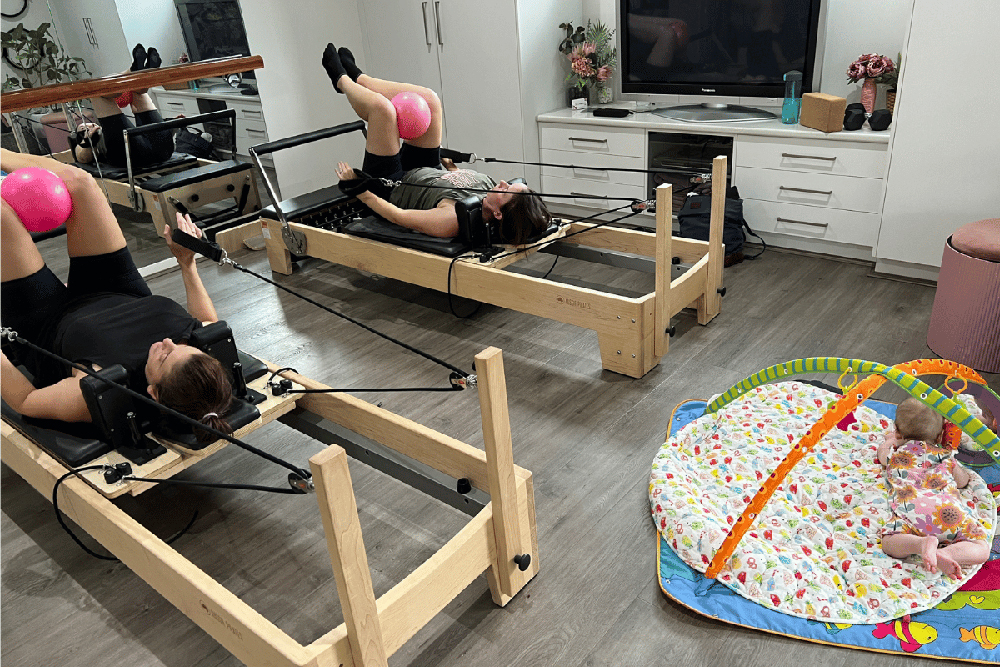
5. Avoid doing long sequences for the same muscle group.
Your body will likely have developed some muscle imbalances and alignment changes from accommodating your baby in pregnancy and these do not spontaneously resolve postnatally without effort. Often the buttock and abdominal muscles are weakened, the ribcage can be stiff, and the arches of the feet can drop. This can all effect our biomechanics and mean it is easier to fatigue quicker or performer exercises with poor form.
6. Modify for your discomforts.
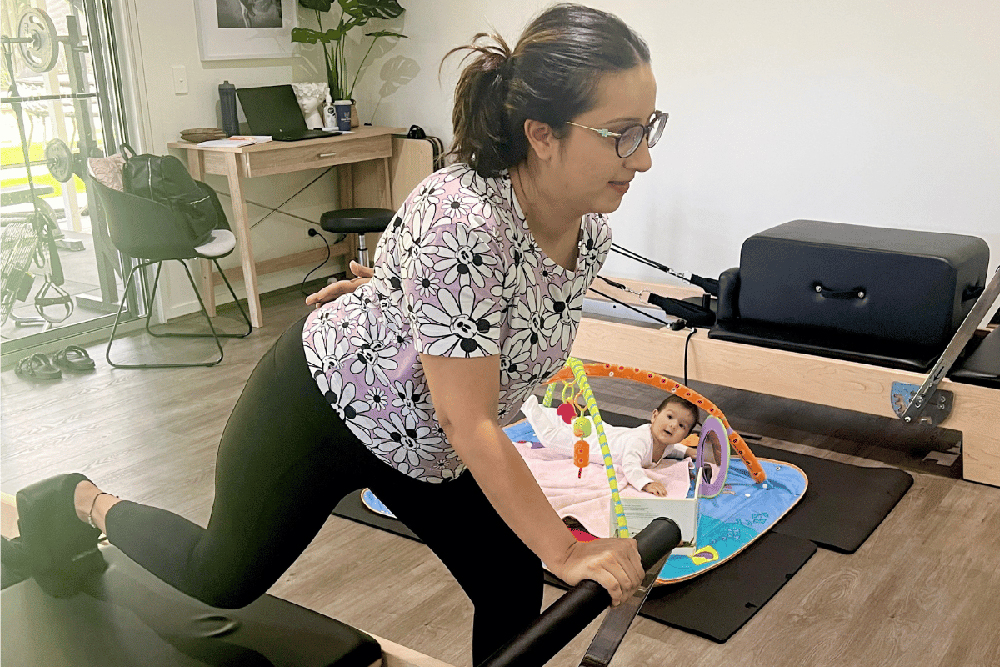
If you had pelvic girdle pain in pregnancy and your pelvis is still a little “niggly” at the symphysis pubis joint or sacroiliac joints (front and back joints of the pelvis) then stick with symmetrically loaded exercises, so both legs rather than single sided. For example, choose feet on bar lying leg series and squat hovers vs scooter or side leg foot in strap series. If the pain is almost resolved you may be right to simply reduce how wide you separate the legs and lower the resistance. For example, scooter through smaller range on a lighter spring and do more sets with lower repetitions, changing sides more often.
If you have wrist pain make use of forearm supported postures to avoid loading in wrist extension and try not to grip the straps. Wrist splints might be needed.
7. Include lots of ribcage mobility work in your program, especially rotation and extension.
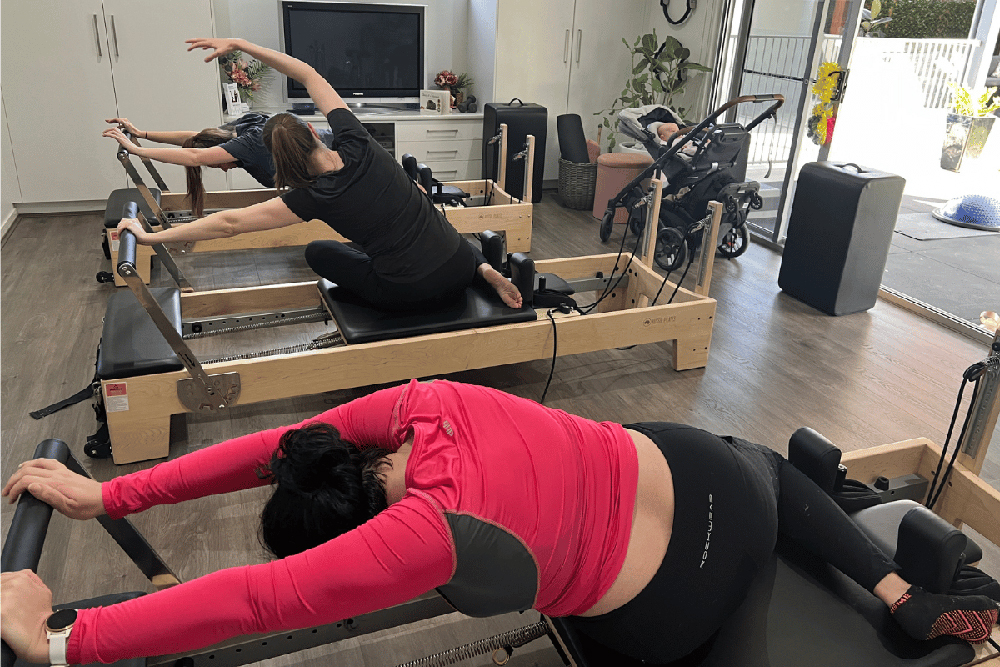
If your ribcage doesn’t move well the abdominal pattern can be affected. A flared ribcage makes it hard to improve abdominal diastasis. Poor rotation can lead to straining the front of the shoulder joints as you try to move into end of range for arm toning exercises. Lack of motion in the upper back often causes strain around the braline level of the spine and can cause you to move into excessive arching (lordosis) in your lower back. This can result in back pain after a class.
8. Don’t forget about your neck.
Many of the muscles in your neck can be tight in the early months post-birth. By late pregnancy when your lower ribs are pushed wider your breathing may change causing you to use your neck muscles when you take a breath. Nursing your baby for hours upon hours can tighten the neck muscles, and changes to the curves of your back in pregnancy may lead to you adopting more of a poked chin posture. Sprinkle neck exercises through your classes, especially between abdominal repetitions. I like to use a deflated Chi under the head if Mums are in lying and get them to perform some chin tuck exercises. Try broadening across the collarbones when setting for an exercise, think melting shoulders away from ears. Between exercises do some side neck stretches, add some arm nerve gliding moves. Dropping your bottom jaw a little can to help relax.
9. Consider the impact of gravity on the vaginal walls.
Pregnancy and particularly vaginal birth, lead to less support offered by your ligaments and fascia supporting your pelvic organs. When we exercise upright it immediately places load on these tissues simply by introducing gravity. Try and think about the position of your pelvis and whether there are ways you can program your class to regularly move into more horizontal positions. For example, you could do scooter with a forearm rested on the bar and the spine horizontal. You could do several arm toning exercises lying on your back or tummy rather than in sitting. You could choose sidelying leg series rather than standing.
10. Your pelvic floor needs training to both contract and relax.
It is easy to think pelvic floor weakness is the cause of all our problems such as vaginal heaviness, bladder leakage, or difficulty controlling wind. This can be the case, but some women have a pelvic floor that doesn’t know how to relax. Imagine if you have had a history of pelvic pain, perhaps a long term battle with endometriosis, and your body has responded with years of gripping through your thighs and vagina. Maybe you feel looser in the vagina post birth or heavy and it makes you want to grip constantly to try and hold everything in. Long term gripping can cause pelvic pain, difficulty emptying your bowels, and we don’t want your exercise to make it worse. In fact, we can use exercise to guide your pelvic floor to let go. Try and remember to relax your pelvic floor during the easier part of the movement. This is often during the breath in phase. Between sets you can practice belly breathing to help you to let go and lengthen your pelvic floor. You can also include postures or movements during rests that encourage opening up through the hips for example a happy baby yoga pose or a wide knee rocking in lying.

I love reformer pilates but it is important to understand the impact of pregnancy and childbirth on one’s body and careful consideration of programming. Enjoy getting back to what you love. Feel free to book an appointment if you would like further guidance. Be In Blossom offers private and small group reformer Pilates at our Keperra studio plus group matwork classes at Chermside.